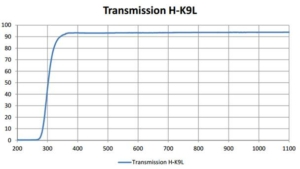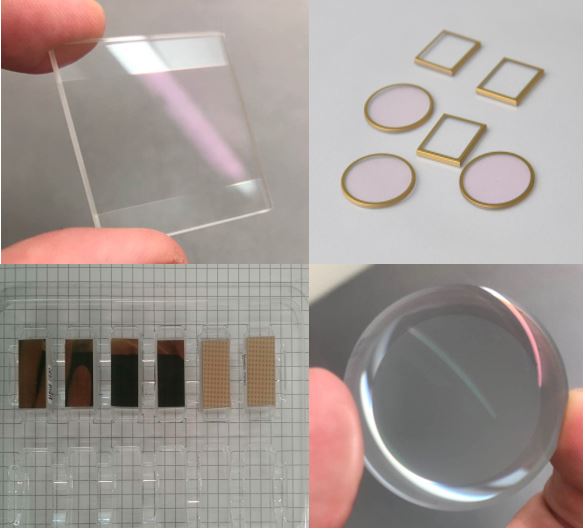H-K9L explained
Used as an equivalent of western brand similar material, HK9L is a cheaper option with good optical properties. HK9L is composed of elementary material found in most of optical components. At Sinoptix, we frequently use it as competitive alternative (Schott N-Bk7) for optical components. This material is manufactured by CDGM (ChengDuGuangMing) the top Chinese optical glass manufacturer company founded in Chengdu in 1956.
HK9L is high quality optical glasses that is used whenever the additional benefits of fused silica and fused quartz (like for example for high transmission outputs in the UV-C light section and deep IR-light) are not required. This material performs well in all chemical tests and no special handling is required. The material is also relatively hard with an extremely low bubble and inclusion content. Besides it provides an excellent transmittance through-out the visible and near infrared spectra and down to 350 nm in the ultraviolet with low absorption.
Special characteristics
| High optical quality |
| Made of the purest raw materials |
| Colorless appearance and very clear looking |
| Nearly free of bubbles |
| Nearly free to inclusions |
| Excellent alternative to N-Bk7 |
H-K9L meaning
According to CDGM naming rules, the “H-” refers to environmentally friendly glass, not including lead (Pd), cadmium (Cd) nor arsenic (As). H-K9L glass is RoHS 2.0 compliant.
The “K” letter refers to the type of glass called crown glass. It is relative to its position in the nd-vd optical glass chart.
The glass code of H-K9L is 517642, the first three digits refers to its refractive index value ( 1.51680) while the three last digits refers to its abbe number value (64.20)
Can H-K9L be molded ?
Its fusion point is too high for being molded. Nevertheless there is an equivalent reference called D-K9 with slightly different optical properties ( nd= 1.51633 & vd=64.06) that is can be used for molded optics.
“D” letter stands for heavy metal free, mold-able optical glass.
Typical applications
| Protective windows for laser applications |
| General optical applications |
| Optical items like lenses and prisms |
| Mirror substrates |
| Substrates for optical coatings |
! In china the abbreviation “K9” can be used for H-K9L but also for other “similar” optical glas and simili crystal glass, always specificy full name to avoid misunderstanding








